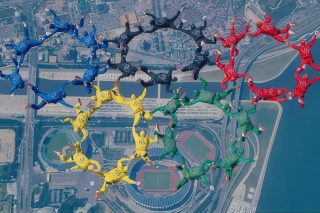Tom Sanders – Skydiving Photographer Extraordinaire
News
Posted by: International Skydiving Museum & Hall of Fame
6 years ago
Written by Laura Jane Happick
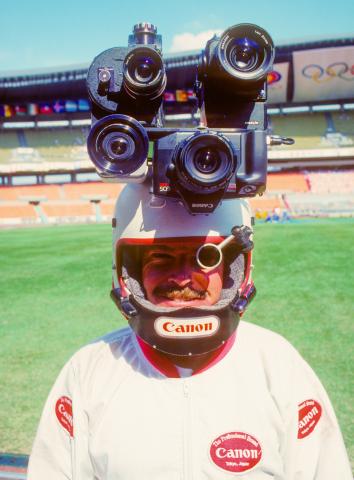
In addition to playing a substantial role in the development of photography and videography in the skydiving industry, few have dedicated more of their time, resources, and funds to advancing skydive filming, or made skydiving more accessible to the non-skydiving world, through countless timeless images and films, than Tom Sanders.
Who would have known the course of the skydiving world would change for the better, forever, when Tom Sanders, D-6503, made his first skydive in 1978?
In the beginning: The inauguration of skydiving photography
From the start, Tom was dedicated to capturing skydiving in ways never before seen. Originally a carpenter by trade and a dedicated amateur photographer by hobby, Tom was immediately struck by how there was no way to capture a photo when one jumped out of the airplane. A few weeks later, churning with inspiration, Tom returned with his 800 mm surfing lens, tripod, and dog. He got permission to sit in the landing zone area and got to work photographing beginners and experts, providing them with nice close-up under canopy shots. As Tom puts while he “pounded nails Monday through Friday,” every weekend he could be found with his camera equipment at the dropzone.
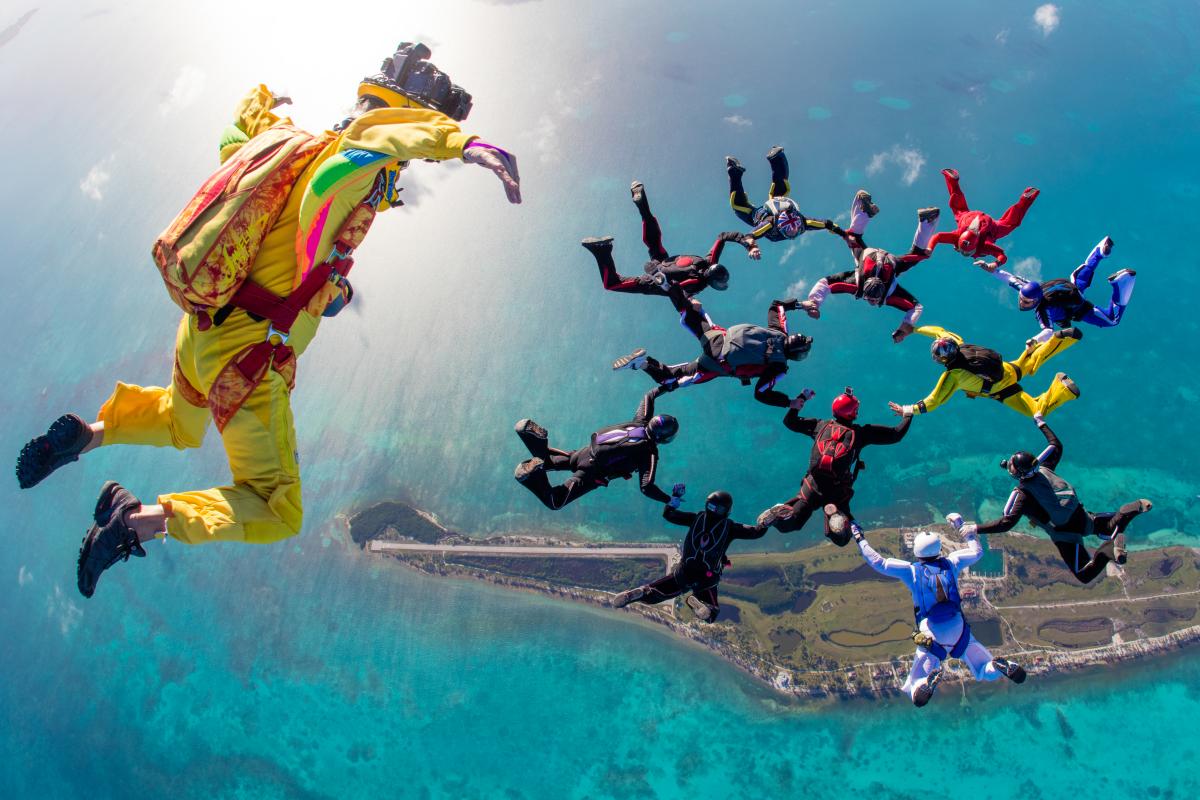
The next pivotal step on Tom’s photography journey came when he was given permission to mount still cameras on the strut of the Howard aircraft to capture exit shots. Working with Larry Perkins, the previous owner at Lake Elsinore Parachute Center and an aircraft mechanic, Tom was able to design a mount to fasten a tripod head to the cowling and then run a wire release into the cockpit. Eventually, these mounts were added to the Cessna 182 and the DC-3.
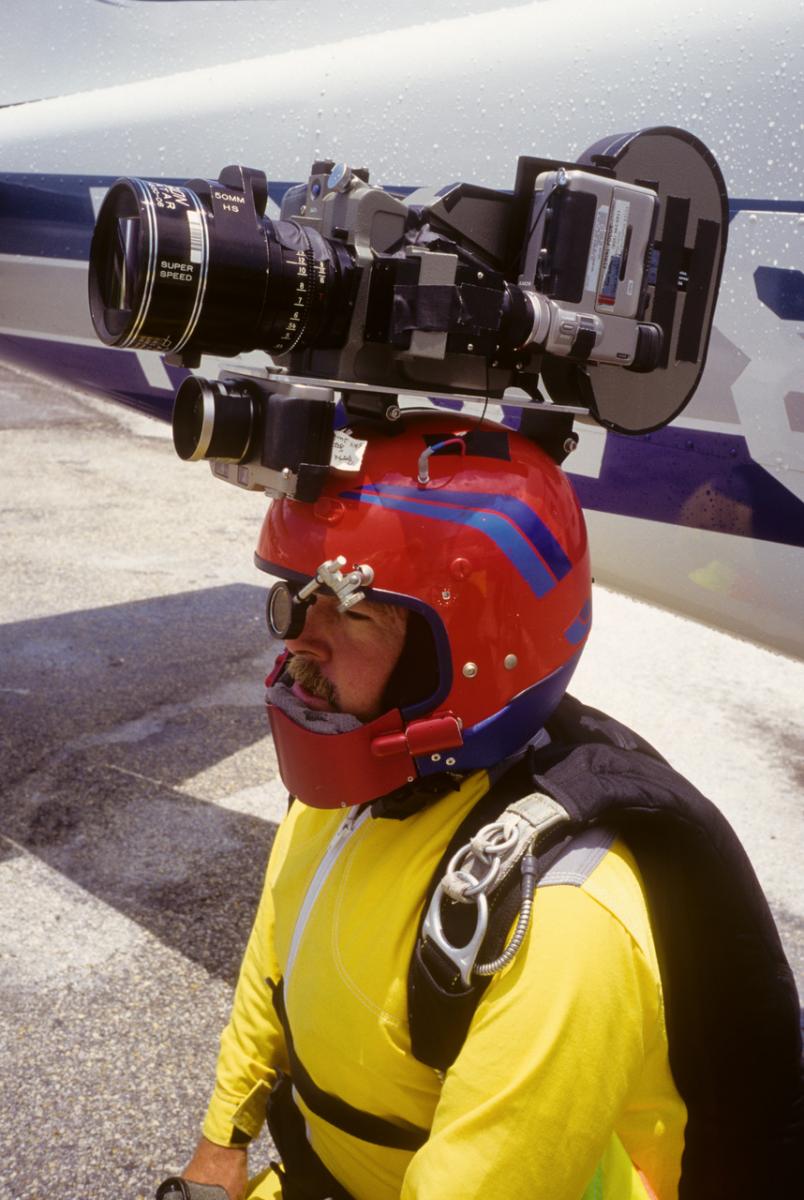
Once video became available, Tom added video with audio to his aircraft setups. These were composed of two mounted cameras, a still and a video camera. Using a remote control and a microphone in the cockpit, Tom was able to capture the excitement happening within. The video systems Tom used were two-piece. Tom would meet the landing aircraft take the recorder, replace it with another, and use the previous tape for student debrief and sales. His system in the 80’s allowed him to capture the entire climb out, exit, and the deployment.
Eventually, Tom’s skydiving photography success allowed him to quit being a carpenter and allowed him to turn his attention to skydiving and video full time. In fact, his photography concession was the first full time, successful business of its kind in the world.
In the early days, one cameraman could film many students. Tom would mount a still camera on the DC-3 wing and had a hand-held video camera that he used inside the DC-3 and then would put it out the emergency exit window to capture the jumps on video while triggering the still camera. With this method, Tom was able to shoot video of the gearing up, pin checks, boarding, flight to altitude, getting in the door, and exit through deployment. These videos were crucial for effective debriefs, much clearer than handwritten notes from an assistant. Almost everyone purchased the still picture, and those that had the recently available “newfangled VCR” bought the video. Perhaps the inspiration for video concessions today, in each of these videos, Tom also included a teaser of experienced skydiving to lure them back for more jumps.
Aside from providing financial stability, his photography business also enabled him the opportunity to conquer his fear of heights. After all, Tom was at the DZ pretty frequently, and as he says, “had no real excuse not to jump.”
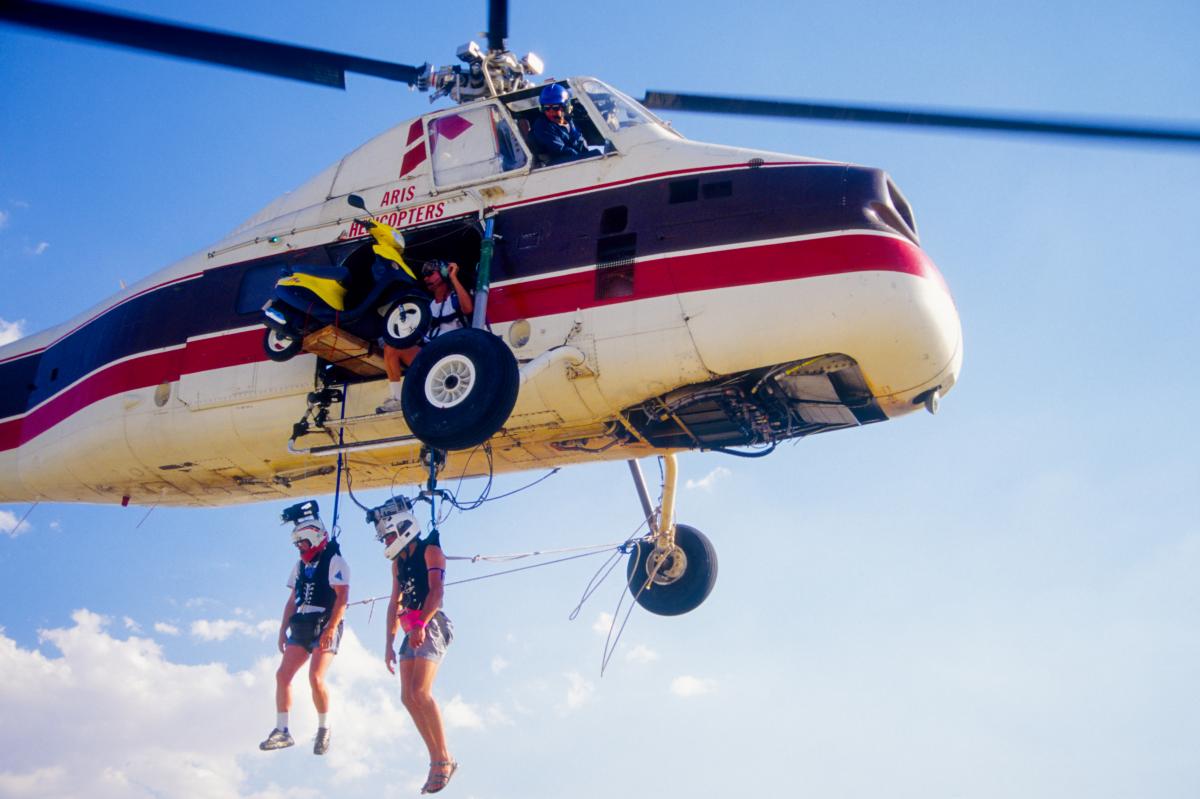
Admittedly, Tom was not initially the greatest of skydivers. Tom shared “While I was able to do well when I had a static line, when I progressed to “clear and pulls” I was a mess.” So much so, his instructor Mike Wheeler suggested to him that “skydiving was not for everyone.” Lucky for him and for the sport of skydiving, Tom got his act together. Though, Tom credits his photography success as the only reason he was able to make it through the student program.
Tom enjoyed hanging with the skydivers and capturing each jump with his photography business. Each weekend, by the end of the weekend, Tom would get the courage to make one jump. Thankfully for the industry, after Tom managed to get a few good jumps in, it clicked. Skydiving was like bodysurfing to him, and it just so happened that Tom was a good surfer.
Freefall Camera Work: The New Frontier
Tom credits legend Ray Cottingham with teaching him to do freefall camera work. At the time Tom was learning, there were very few freefall cameramen in the world. This was a pre-video time: no portable video was of a high enough quality for TV. Early footage was captured on 16mm film, and in the beginning, this footage was often of local news anchors completing the newly developed tandem skydive, which to make matters more interesting were drogueless. Faced with these challenges, Tom developed and advanced his freefall video skills.
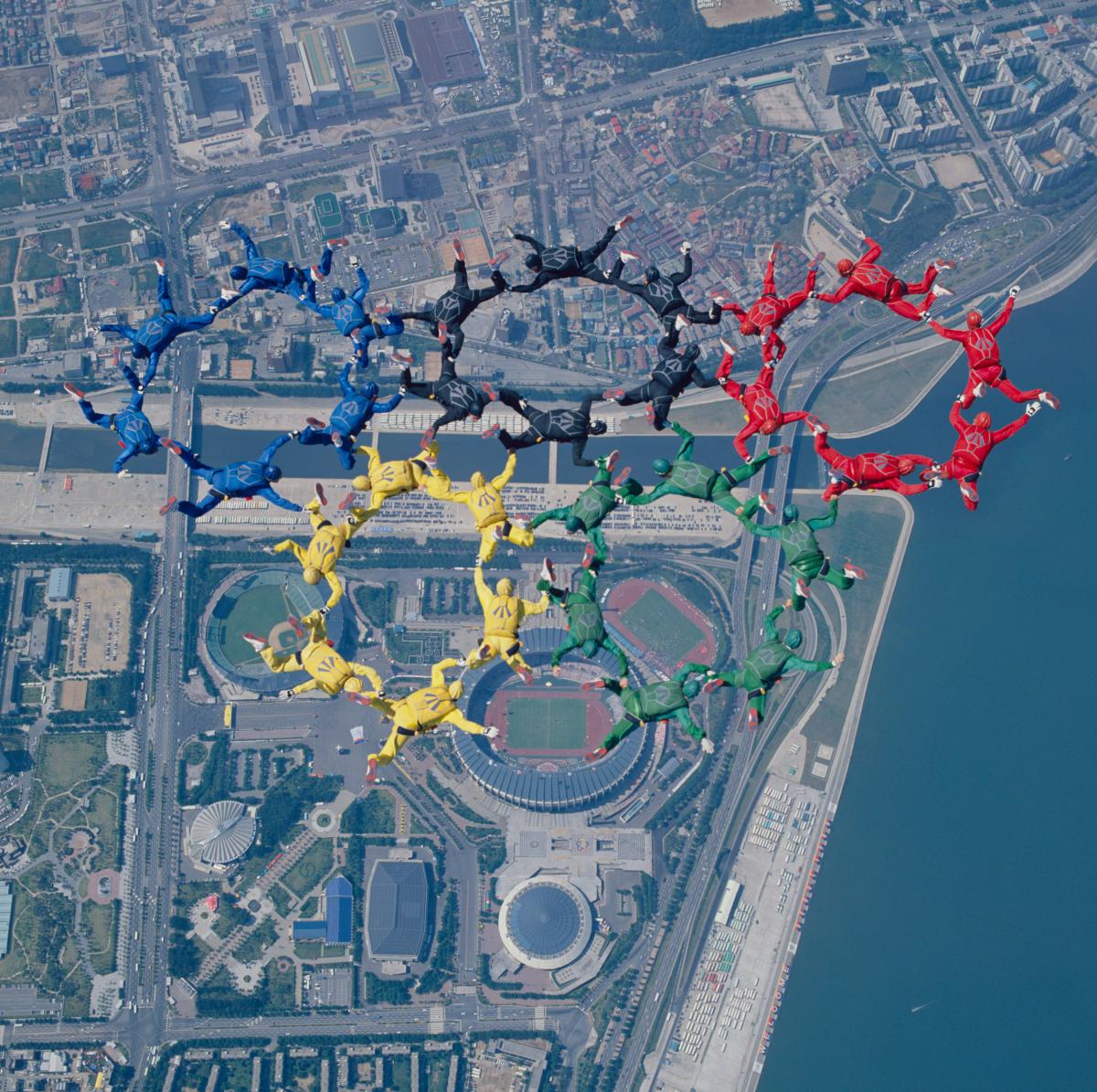
As camera equipment evolved, Tom was at the forefront, striving to integrate the new technology into the realm of skydiving photography and videography. At one time, this meant jumping a “portable” video system he spotted at a booth on the Del Mar Fairgrounds. The system weighed in at a whopping 22lbs and required Tom to rig a cutaway handle and reserve ripcord to the side of the custom case.
Throughout his career, Tom has made every effort to advance skydiving film and photography. Tom strove to capture content in unique ways, utilizing previously un-attempted camera angles. Often, this required him to pour his time and money back into the field. Tom also had a hand in historic jumps like the Olympic jump, which was the first live transmission of skydiving to a TV audience, bringing skydiving to over a billion viewers. Tom was also the videographer entrusted with filming President Bush’s first student skydive.
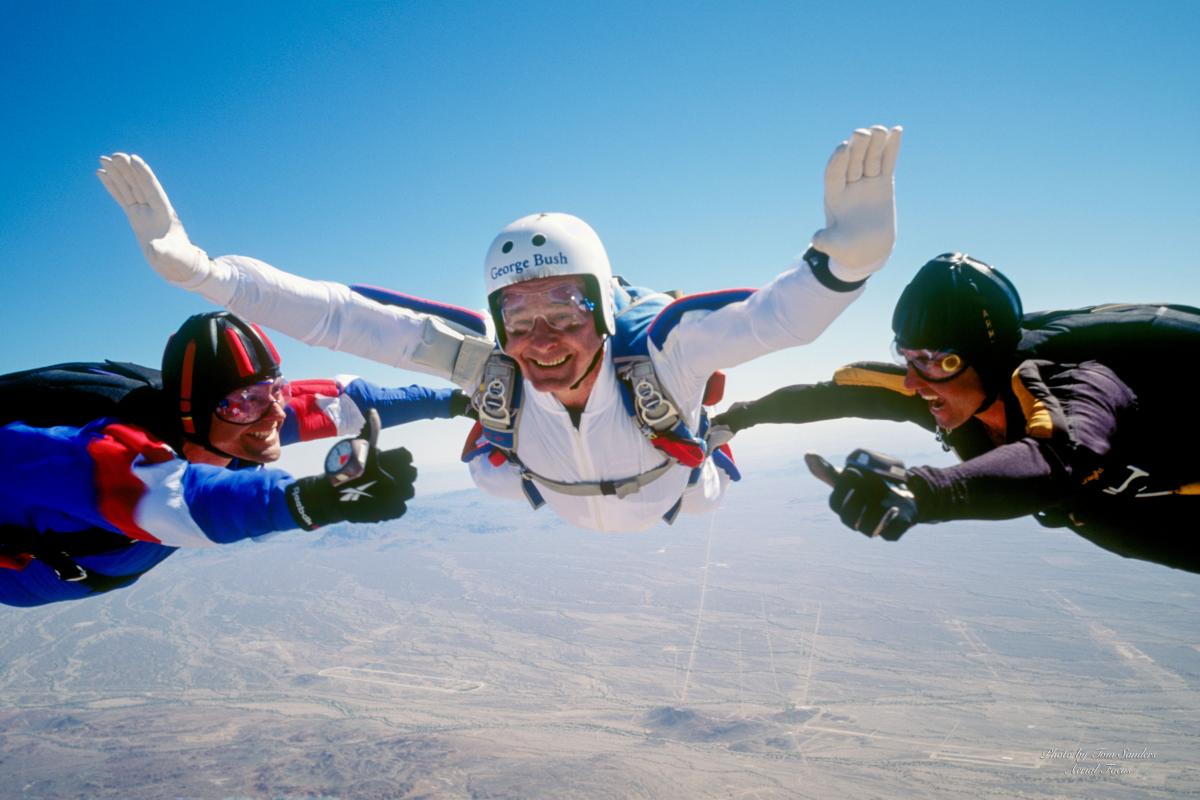
A Longtime Legend
For over 40 years, Tom has spent his time caring for and storing his stills, video, 16mm and 35mm movie film. Because of Tom, we are able to preserve so many important parts of skydiving’s rich and exciting history.
Even today, Tom is dedicating tireless hours to archiving his still images. Truly, the significant memorable and positive influence Tom has had on the skydiving industry as a whole cannot be understated. He has truly given his heart to this wonderful sport.
Categories:
You May Be Interested In:

2025 Path & Pioneers of Excellence Recipients Revealed!
3 weeks ago by Nancy Kemble Wilhelm

Congratulations to Museum Trustee Sherry Butcher!
1 month ago by Nancy Kemble Wilhelm
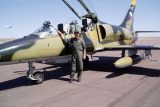
Don Kirlin Joins Board of Trustees
3 months ago by Nancy Kemble Wilhelm
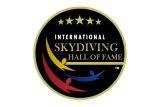
Congratulations Hall of Fame Class of 2025!
4 months ago by International Skydiving Museum & Hall of Fame
Join the Mission
Be Part of Skydiving History
As a nonprofit organization, we are counting on investments of time, talent, and resources from our collective community to make the International Skydiving Museum & Hall of Fame a reality.
